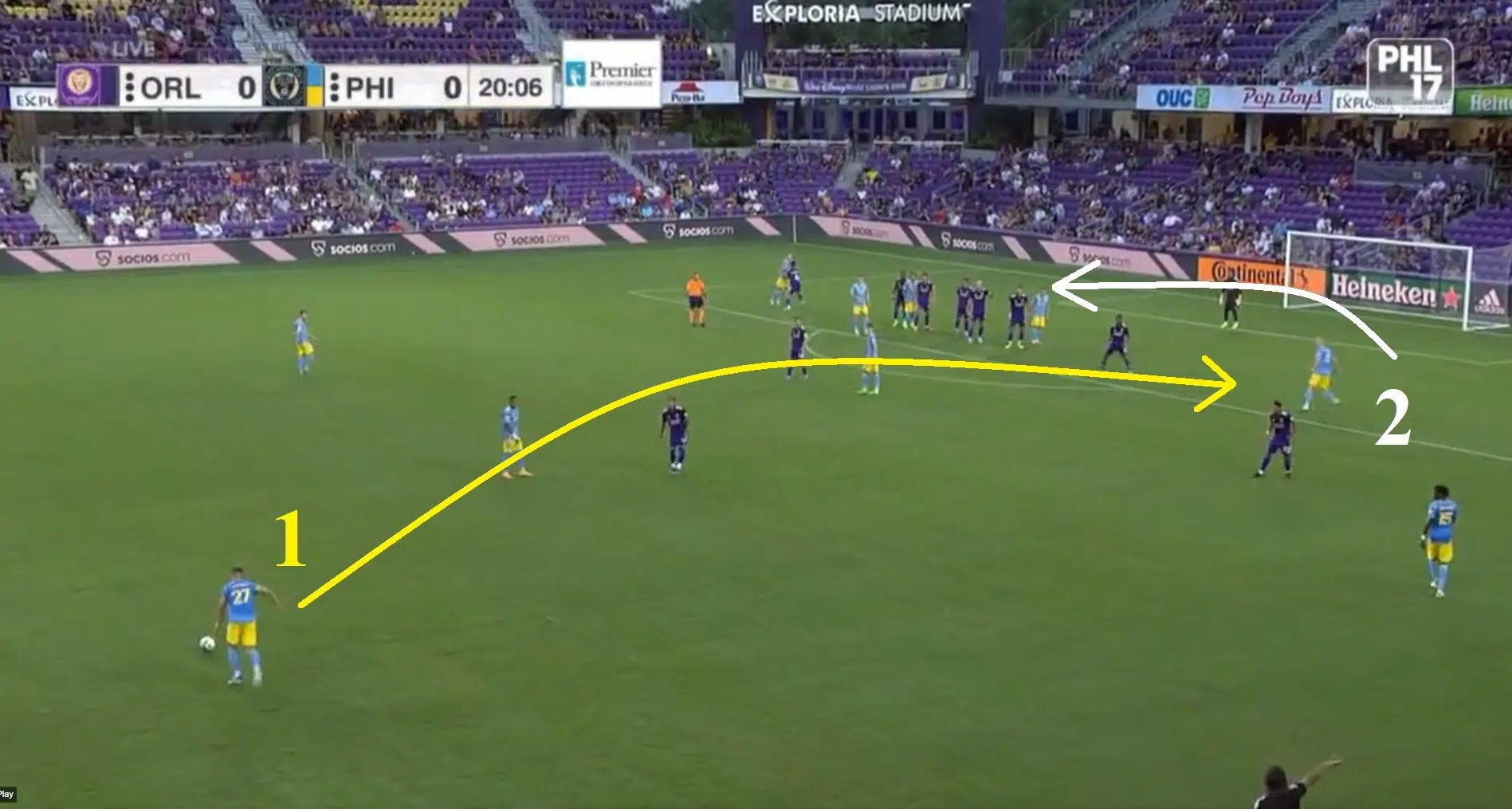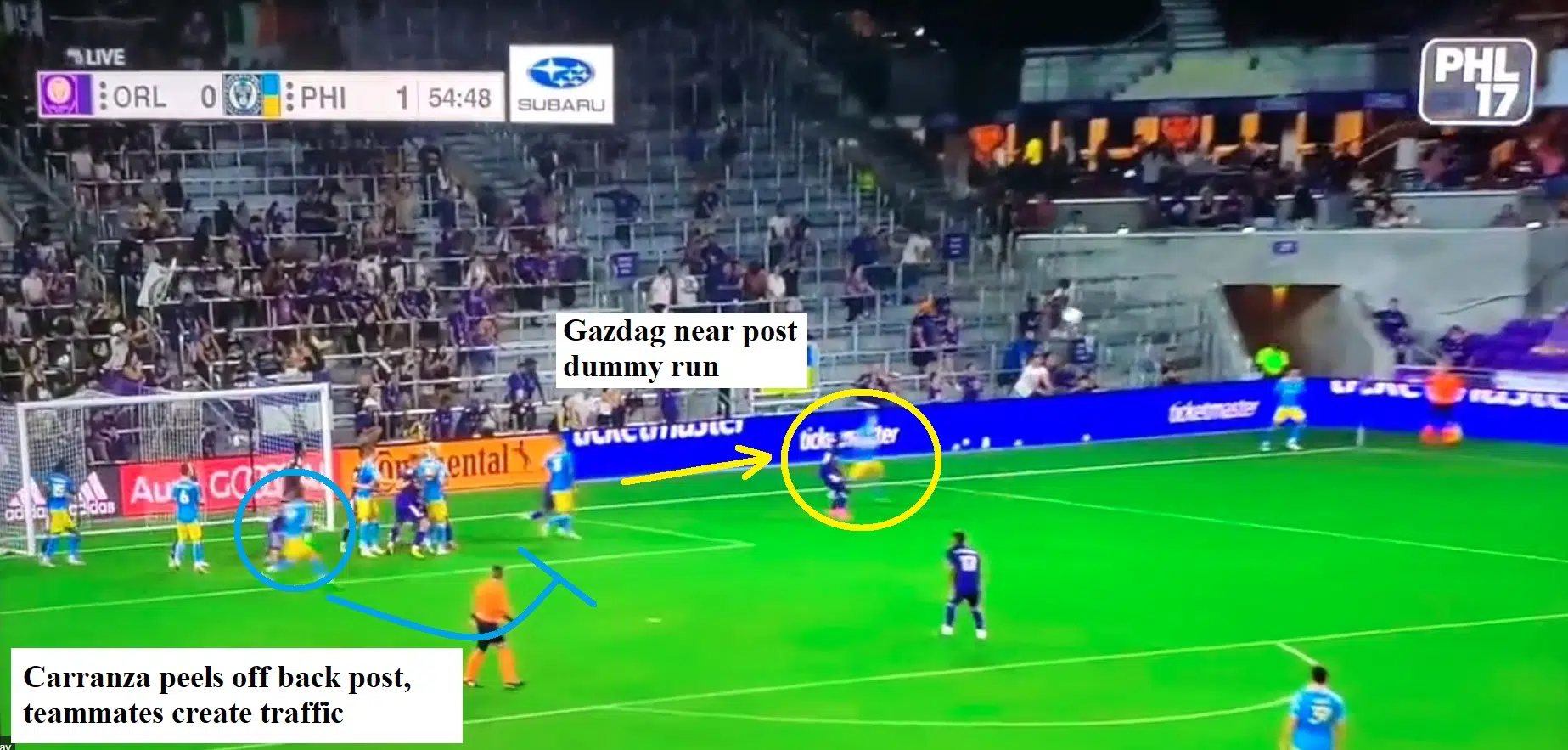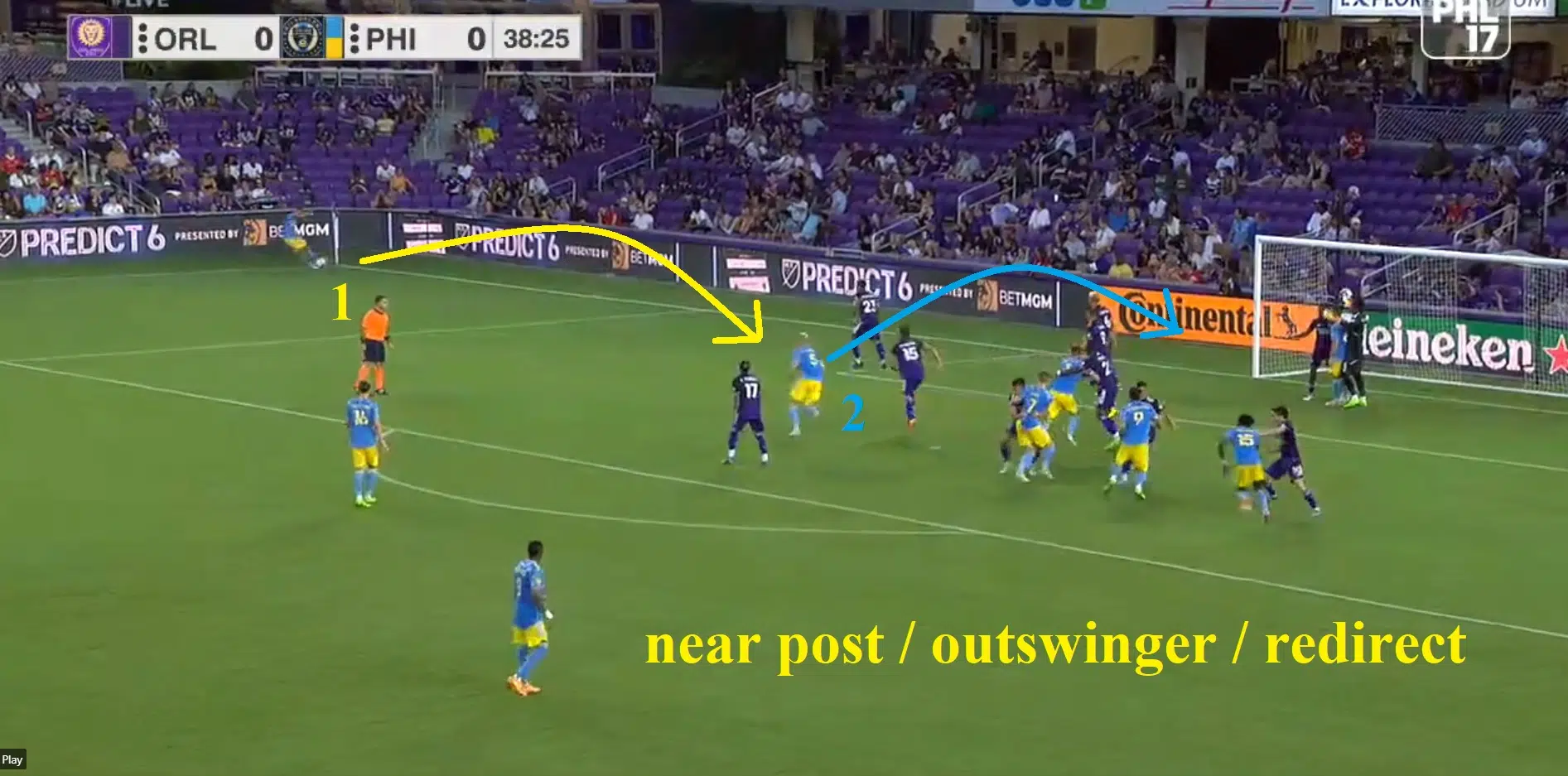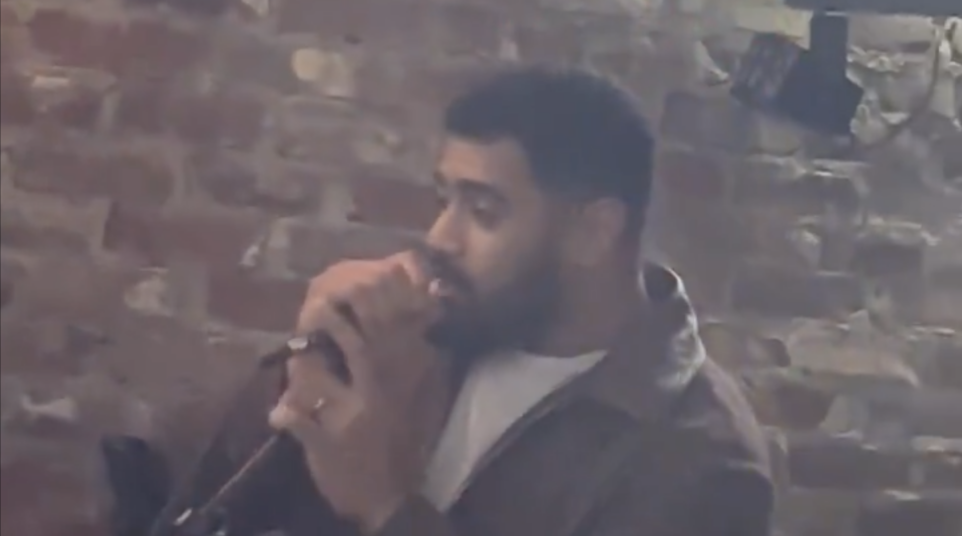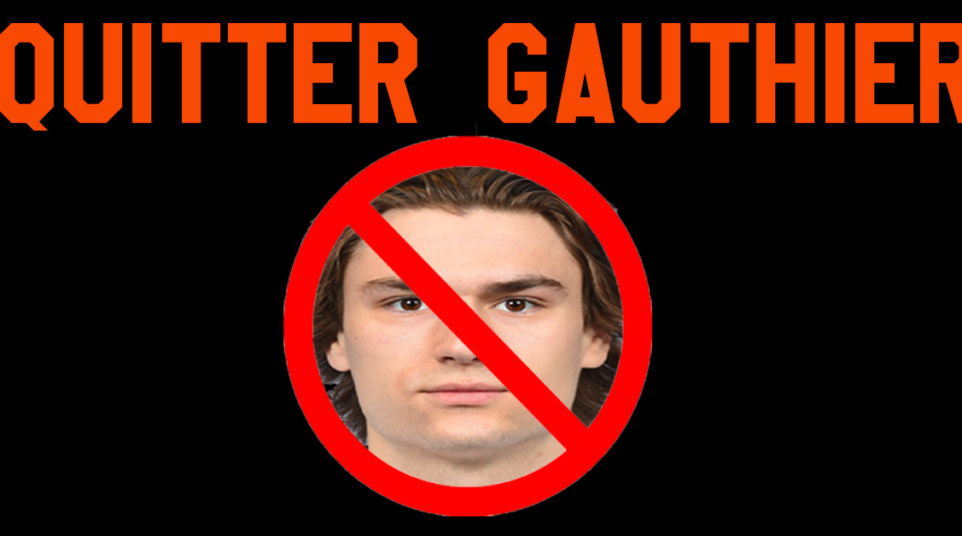
Union Continue to Clobber Opponents with Well-Executed Set Pieces and Clever Designs
Your Philadelphia Union have won four straight games and remain atop Major League Soccer’s Eastern Conference, though if we’re adding context, New York City holds a game in hand and has a slight edge in points per game. Minor details there, but what’s important is that this Union team is a blue collar bunch that plays smothering defense and gives max effort every time out, which is what we’ve been asking the Flyers and Phillies to do for something like 10 years now, to no avail.
Anyway, the U have scored three set piece goals and two penalties in their last three games. They haven’t scored from open play since putting seven goals past D.C. United a few weeks back, and while the free-flowing attack isn’t necessarily there, they’ve been super-creative on dead balls and I want to highlight three routines I picked out from the weekend win against Orlando City.
Set piece 1 – hit the seam, redirect against the grain
In the first half, Kai Wagner, who is tied for second in MLS with 10 assists, picked out Jakob Glesnes on a relatively deep free kick:
This was a routine from a set piece. See Glesnes flare to the near post. The service is overcooked, but good design to head a ball back across the grain: pic.twitter.com/WhWTiZul7e
— Kevin Kinkead (@Kevin_Kinkead) July 25, 2022
This is a near post seam. Most teams will just drive a ball to the far post from this distance, but the Union are trying to misdirect and have Glesnes head this ball back, against the grain. If the service is a little better, defenders will have to turn and react to the header and get their bodies reoriented, which can be difficult in a bang-bang type of situation:
Set piece 2 – stack bodies and create traffic
The Union ran two variations of this play, which looks like something you’d see in a basketball game.
I’ll start with the second one because there’s a better camera angle to work with, and unfortunately it’s a bit obscured by a lower third graphic here, but you’ll see everybody lined up on the six yard line in a cluster, then there’s a dummy run and back post peel:
Second time the Union have run this corner routine tonight. Hard to see because of the graphic, but there's a dummy run off the near post, then Carranza peels off the back post like a basketball SLOB/stack movement: pic.twitter.com/R7WKUOVktd
— Kevin Kinkead (@Kevin_Kinkead) July 24, 2022
This is a design you see in a lot of sports. If you’re a hoops fan, you’ll see four guys in a straight line during a sideline out of bounds play (SLOB). They all peel off and go in different directions, which makes it hard for defenders to track because there’s a lot of traffic and a lot of bodies in the area. It’s difficult to navigate that cluster. Same thing with football. You’ll see these kinds of picks and blockages with a rub route or a Red Zone passing pattern, where one route is meant to free up a second route. The Eagles ran a lot of those last year, and executed them poorly, resulting in flags, but got it straightened out about halfway through the year.
In this case specifically, the Union are using the near post guy in a dummy fashion while Julian Carranza peels off the back post and comes out to the 8-10 yard area, hoping to lose his defender:
The first time they tried this stack, in the first half, they did it without the dummy run, but the design was essentially the same. From the straight-on view, you can see how congested it is in there. When Carranza’s defender is chasing him, he has to fight through some static bodies that really just serve to clog up the six and make it messy:
Here’s an angle from Kai’s perspective, where you can see the traffic at the six-yard line. This is from the first time they tried it, but no dummy run in this sequence: pic.twitter.com/8snEfN3jqk
— Kevin Kinkead (@Kevin_Kinkead) July 25, 2022
One of the reasons this works so well is because most teams are playing a mix of man and zonal marking on corner kicks. Orlando had a line of three floaters sitting on the six, while the rest would man up on Union players. So when you walk 4-5 players down to the six, you are adding a 4v4 or 5v5 clump to a group of three dudes already standing there. The result is a jumble of bodies that only aids the attempted congestion.
Set piece 3 – near post outswinger
The Union kept at it with these set pieces and scored just before the half on another that was designed.
At first glance, I thought this might have been improvised, but it was actually a mix of both:
Glesnes heads it off a Kai corner and Gazdag gets a touch on it to send it past the keeper!🙌 Goal was initially called offsides but VAR saves the day.#ORLvPHI | 0-1 | #DOOP pic.twitter.com/QwJZuI5Zjh
— Philadelphia Union (@PhilaUnion) July 24, 2022
That near post run was pre-determined, but Glesnes leaves a little early, which makes me think that he and Wagner thought they could catch #15, Rodrigo Schlegel, snoozing a bit. So we’ll consider it a designed play with a bit of improv as well, which really is fantastic when you think about it. It’s a “heads up” type of play, right? They know where they’re going to connect on that outswinging service, but there’s some non-verbal understanding to go early, get to that spot, and try to catch Orlando slightly off guard. The result is a game-winning goal:
Fantastic stuff from the Union, who really put a lot of time and effort into these designs. The funny thing is that Alejandro Bedoya is their best near-post runner, and he wasn’t even available for this game, so they simply swapped in Glesnes and had him handle that duty instead. I have no clue if opponents aren’t scouting the Union properly, or if they just aren’t defending with the required dedication, or if the Union are that damn good with restarts, but Jim Curtin’s team has been clobbering other teams on dead balls during this positive stretch.


